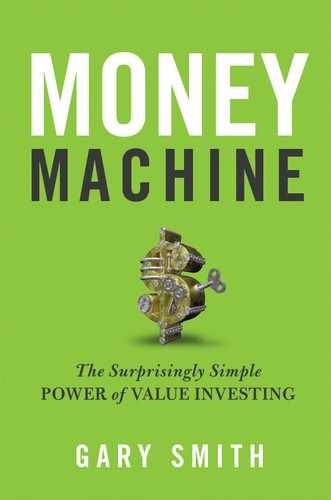FOREWORD
Most people who buy and sell stocks have heard the story of the two finance professors who see a shiny $100 bill on the sidewalk. One professor is tempted, but the other cautions that if it were real, someone would have picked it up already. The lesson is supposed to be that, in the stock market, anything that looks like free money is an illusion. Some people actually believe this—I do not. Money Machine: The Surprisingly Simple Power of Value Investing makes clear why others should not believe it either.
Professor Smith reminds us of the South Sea Bubble, when even Isaac Newton bought stock in companies that lacked a compelling story but touted a whimsical expectation of reselling the stock at a higher price to an even bigger fool. More recently, investors bought into the same ill-founded illusions with Beanie Babies, gold, and dot-coms. At the other end of the spectrum—from greed to fear—the 2002 and 2009 stock market crashes left suitcases full of $100 bills on the sidewalks.
So, how does an investor distinguish a bubble from a bargain? Both Professor Smith and I believe the answer is through value investing: thinking about the intrinsic value of a stock and not about the stock’s old price or a guess of its future price.
Professor Smith clearly explains the two keys to being a successful value investor.
First, no one is able to predict how prices will wiggle and jiggle as fear and greed batter the markets. But you can think of stocks as money machines. Think of the cash you will receive if you own the machine (and leave yourself a margin of error).
Second, do not let lust or panic sway your investment decisions. Many investors had a hard time sitting on the sidelines when Yahoo, AOL, and other internet companies soared during the dot-com boom in the late 1990s, but value investors did exactly that, they sat. Many investors could not think about buying stocks when prices fell more than 40 percent between 2000 and 2002 and, again, between 2007 and 2009. Value investors did exactly that; they bought because those were buying opportunities of a lifetime.
Professor Smith also explains how you could find bargains even in ordinary times—for example, in companies that are out of fashion and in closed-end funds selling at a discount. Some may think it counterintuitive that companies with analysts who are pessimistic usually do better than companies with analysts who are optimistic, or that stocks that are booted out of the Dow usually do better than the stocks that replace them . . . but not a value investor.
Let others make decisions driven by fear and greed, and thank them silently for the opportunities they give you—for the $100 bills they leave on the sidewalk. If you want to be a great investor, look for these $100 bills and do not be afraid to pick them up off the ground!
This is another great, well-thought-out book by Professor Smith that I enjoyed reading, and you will too.
MICHAEL LARSON
Chief Investment Officer of BMGI,
the Investment Office of Bill Gates
